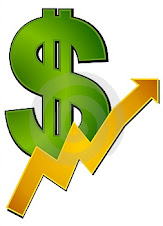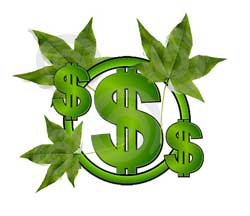By CHRIS UMIASTOWSKI
With last year's launch of the Model S, the electric car company suddenly had a practical all-electric, no-gasoline sports sedan with a reasonable base price
Not too long ago, I came to the conclusion that electric cars are for real, and are poised to see stellar growth over the next decade. The company that convinced me of this was not one of the big auto makers. It was California-based Tesla Motors Inc.
Because of their accomplishments and the early nature of growth in this market, I wound up becoming a shareholder. And with Whole Foods Market, I now have two stocks I'd like to add to my Strategy Lab portfolio, and I'll likely be selling my shares in Sprint to accommodate them.
Given the huge runup in Tesla's stock since I've become a shareholder, I'd secretly love for Wall Street to be disappointed in the short term sometime soon, creating an opportunity for long-term shareholders to buy more.
Tesla's current success comes on the back of a single car, the Model S. This full-sized sports sedan has no gas tank. It's run only by batteries. On a full charge, it can go about as far as my family's Lexus SUV, but the savings add up to about $50 per "tank." Since introducing this Model S in mid-2012, Tesla has gone from being a "show me" story to the company that may disrupt the entire automobile industry, earning it the complimentary title "the Apple of the car industry" from many observers.
I believe Tesla found a successful model for selling electric cars because it didn't first aim for affordability. Instead the company focused on making a no-compromise car knowing it would come with a high price point. They launched in the luxury segment of the market. Their first car, the Roadster sports car, cost more than $100,000 (U.S.) and Tesla produced about 2,500 units. This developed Tesla into a luxury brand. Then, with last year's launch of the Model S, the company suddenly had a practical sports sedan with a base price of about $70,000 – still in the luxury price range, but substantially less expensive than a Roadster. Within a couple of years, the company expects to sell cars that will cost $30,000 after government rebates.
Tesla is already profitable. This week the company reported its first-quarter results, manufacturing more than 5,000 Model S cars in the quarter, recognizing revenue on 4,900 of them and bringing in $562-million in revenue with 17 per cent gross margin and net profit of $11-million. Their volume of approximately 20,000 cars per year is equivalent to what GM sells in the U.S. market in an average week. It's hardly what you could call relevant industry volume, so it's all the more impressive that Tesla can be profitable with this level of production.
I think Telsa was brilliant to build its brand by launching high-priced cars that actually meet the needs of most drivers. They will easily sell the 20,000 units they plan to manufacture this year, and I'm confident that its new financing program (in the United States) and the launch of the Model X, a sport utility vehicle, in late 2014 will bring substantial demand growth. Keep in mind that Tesla is only just getting started with its electric cars on the world stage. So far they've made zero deliveries of the Model S outside of North America.
As I write this, analysts who cover the stock expect Tesla to post earnings per share of $1.65 next year according to S&P Capital IQ. Given the strong quarterly results (the stock price jumped 24.4 per cent in Thursday trading), I imagine estimates will be revised higher. I believe Tesla is on a path to achieve incredible growth over the next decade. One of my investing mantras is that people tend to overestimate change in the short term, yet underestimate it in the long term. In the next year or two, I don't have any illusions about electric vehicles becoming commonplace. But in 10 years? Sure.
Ten years ago, I don't think we had any clue how important wireless broadband technology would become. We didn't imagine being able to watch streaming video on a mobile phone. Just the same, I think in 10 years we may look back at all the money we wasted on gas-powered cars. Electric cars don't need $65 gas-tank fill-ups. They don't need oil changes, spark plugs or smog checks. They don't need replacement timing belts, mufflers, catalytic converters, fuel injectors, oxygen sensors or many of the other complex electro-mechanical parts required by gasoline cars.
I like owning stocks in companies that are leaders in an industry facing disruptive growth. I think Tesla is that company in the automotive industry. Sure, I missed out on a chance to buy this stock at less than half the price back when my Strategy Lab portfolio launched. But Tesla is now much further along the road to proving itself as a sustainable company. Its market cap seems high, having reached $8-billion following Wednesday's earnings report. But for comparison, BMW is worth more than $60-billion and generates significantly weaker gross margin per vehicle. If there is a future for the electric car, I think Telsa gives investors plenty of growth opportunity.
Chris Umiastowski is the growth investor for Globe Investor's Strategy Lab.
Special to The Globe and Mail





